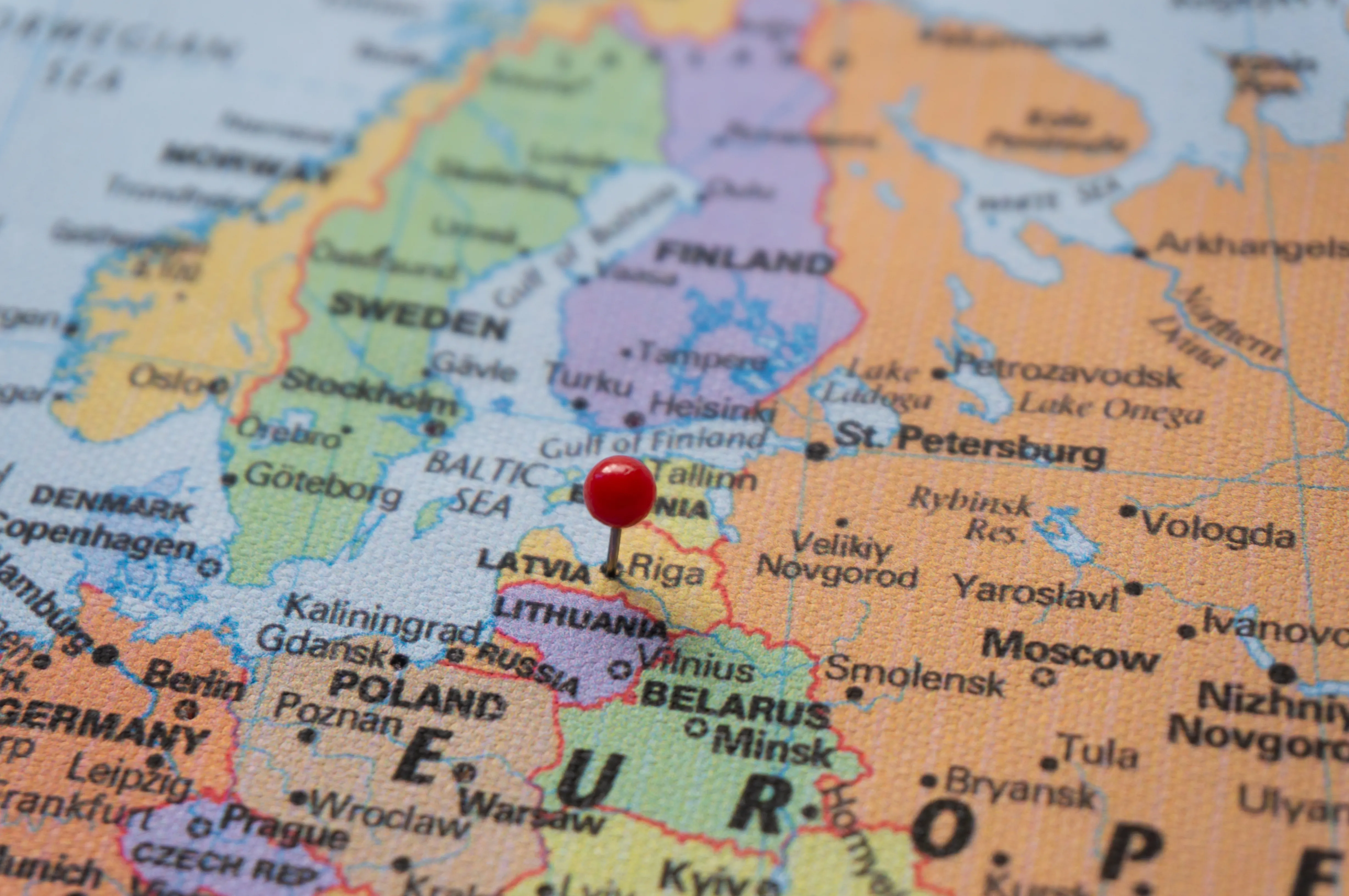
During the Week of Prayer for Christian Unity, which went from January 18-25 this year, Pope Francis emphasized the particular importance of dialogue between Catholics and Lutherans. It was no surprise, then, that the predominantly Lutheran country of Finland played a large role in the week’s activities.
As has become customary, the Pope received an ecumenical delegation from Finland, led this year by the Lutheran bishop of Turku, Kaarlo Kalliala, together with the Catholic bishop of Helsinki, Bishop Teemu Sippo, and Finnish Orthodox Metropolitan Elia of Oulu.
These Nordic representatives were in Rome for another tradition: the annual pilgrimage to honor St. Henrik of Uppsala, the martyr patron saint of Finland, whose feast day is January 19. In this context another major event was the seminar “Finland 100, Finland 1000—Shaping the Finnish Society,” hosted on January 20 in the magnificent Villa Lante on top of the picturesque Gianicolo Hill, where the Institutum Romanum Finlandiae (Finnish Cultural Institute) and the Embassy of Finland to the Holy See are located. The event, which was held in connection with the 100th anniversary of Finland’s independence, was meant to focus primarily on the figure of St. Henrik, who was aptly described as “the hero of the day” by the institute’s director, Tuomas Heikkilä, in his presentation. Heikkilä is a young professor of medieval history, the author of the book Sankt Henrikslegenden (The Legend of St. Henrik), currently only available in Swedish and Finnish, and the keynote speaker of the seminar.
But who was Bishop Henrik and what do we know about him? According to the late-13th century document “The Legend of St. Henrik,” Christianity was introduced in Finland in the second half of the 12th century following a successful crusade led by King Erik of Sweden, who brought Bishop Henrik with him as a representative of ecclesiastical power. Henrik was the English-born bishop of Uppsala, the most important diocese of Sweden at that time. He had come to Scandinavia in 1153, apparently with the papal legate Nicolaus Albanensis, who would later become the only English-born pope, taking the name of Adrian IV.
After conquering Finland, baptizing the people, and building many churches, King Erik returned to Sweden. Bishop Henrik remained in Finland, where he was subsequently murdered by a supposedly pagan Finn whose name was Lalli. The story goes that Lalli’s wife falsely accused the bishop of stealing food and wine, and that Lalli retaliated by killing Henrik with an ax. Over time some Finns have revered Lalli as “freedom fighter” of sorts, resisting foreign influences personified by Bishop Henrik.
In the opinion of Prof. Heikkilä, the real picture is somewhat different and more complex. For example, the name Lalli is the diminutive of Laurentius, a Latin name, and this could not have been but for already-present Christian influence in the region. There is also the fact that Erik’s “crusade” is described as a brief and bloodless event, not even slightly comparable to those to the Holy Land. Most likely, Prof. Heikkilä claims, Christianity had already arrived in southern Finland a couple of centuries earlier, and the expedition led by King Eric and Bishop Henrik was intended to further consolidate and expand the Christian presence there. For the evangelization process to proceed smoothly, it was also necessary to institutionalize ecclesiastical life, and thus Henrik became the head of the new diocese of Turku and the first bishop of Finland. Thanks to his efforts, Finland entered the family of medieval Christian nations, laying the foundations for the development of the future character and identity of the Finns as a Christian people. Soon after his martyrdom, St. Henrik was venerated not only in Finland, but throughout Scandinavia and northern Germany; his feast was already being celebrated on January 20 (it became January 19 after the Reformation) starting from the 13th century.
But the work of St. Henrik is also fundamental for another reason, Prof. Heikkilä pointed out. “Prior to the arrival of Christianity and the Church to Finland, we did not have literacy, we did not have any books,” he said. “So the books were actually brought by the ecclesiastics, by the clergymen, by the Church.” During the Middle Ages, literacy was totally dominated by the Church; therefore it is no surprise that “The Legend of St. Henrik,” the first literary work written on Finnish soil, was written in Latin. Because it was written in Latin, the lingua franca of medieval Europe, this work could be disseminated far and wide, not only in the rest of the Swedish kingdom and Scandinavia, but also in continental Europe, with copies being discovered also in Austria and Belgium.
“It was against this pan-European background that the Finnish identity was being built during the Middle Ages and later on,” Prof. Heikkilä said. In other words, the figures of King Erik, St. Henrik, and Lalli came to reflect the medieval view of Finland as part of the wider European Latin Christianity. With the advent of the Reformation and, even more significantly, the subsequent rise of Romanticism and of nationalist movements, the figure of Lalli grew more prominent, until there was a sort of role-reversal: whereas since the Middle Ages St. Henrik had been seen as the champion of evangelization and civilization, with Lalli representing backwardness and paganism, now Lalli was being celebrated as a defender of fundamental traits of the Finnish character—such as unyielding firmness and loyalty to tradition—against what were regarded as the foreign influences brought in by St. Henrik. This interpretation was particularly potent amid the nationalist movements of early-20th century Finland, which won its independence from Moscow in December 1917.
This nationalist vision is still present among the Finns today, Prof. Heikkilä pointed out; when, in 2004, the national broadcasting company YLE launched a survey asking its audience to identify the greatest Finns of all time, St. Henrik was not among the top 100, whereas Lalli ranked 14th.
But be as it may, St. Henrik was by far the most important historical figure in Finnish history, Prof. Heikkilä maintains.
“I think that still when we look at the Finnish history and the Finnish identity, he is far more relevant than Lalli,” he said. It is to St. Henrik that Finland owes the very establishment of its western roots. “According to our understanding and tradition, it was with St. Henrik that we got our Latin alphabet, we got our literacy, we got our Christian values.”
If you value the news and views Catholic World Report provides, please consider donating to support our efforts. Your contribution will help us continue to make CWR available to all readers worldwide for free, without a subscription. Thank you for your generosity!
Click here for more information on donating to CWR. Click here to sign up for our newsletter.









Leave a Reply